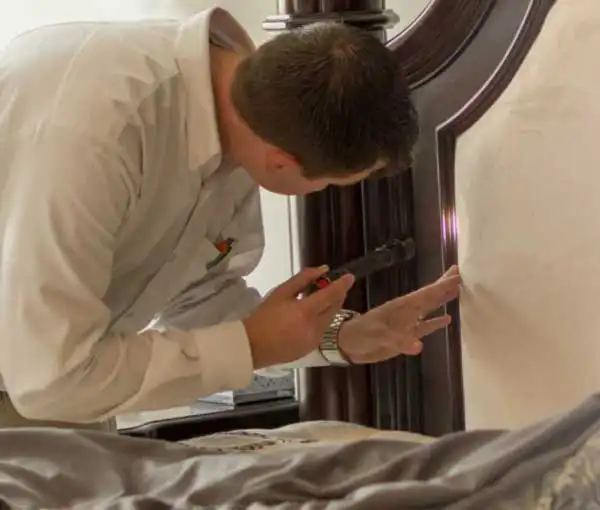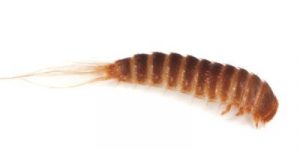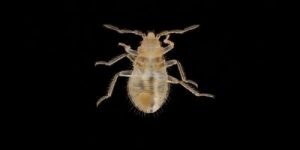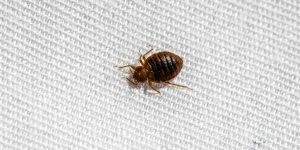Bed bugs vs carpet beetles
How to tell the difference between these common pests
How to tell the difference between these common pests

Neither bed bugs nor carpet beetles are a welcome sight in any home. If left untreated, carpet beetles will eat through carpet and furniture fibers. Bed bug bites can cause skin irritation for all members of your household. You want to treat them as soon as you discover signs of their presence, but bed bugs and carpet beetles are different insects that require different types of treatment. To know what needs to be done you have to know what’s currently infesting your home.
Bed bugs and carpet beetles are commonly confused due to their similar small size, but they have distinct differences in both behavior and appearance.
Bed bugs are nocturnal parasites that feed on human blood, often leaving itchy, red bites. They hide in cracks, mattresses, and furniture, emerging at night to feed. Their behavior is focused on staying close to their food source—humans. In contrast, carpet beetles are scavengers that feed on natural fibers like wool, fur, and leather. They may also consume crumbs and debris, but they do not bite humans. Carpet beetle larvae are more destructive, as they can damage household items, whereas adult carpet beetles are more interested in pollen.
Homeowners often mistake the two due to unexplained skin irritation (which could be an allergic reaction to carpet beetle hairs) or small insects found in the bedroom. Recognizing the signs of bed bugs and carpet beetles, as well as their feeding habits and physical differences, is key to addressing the correct pest problem.
Say Goodbye to Pest Problems for Good!
As you can see from the images below, bed bugs are flat, oval-shaped, reddish-brown insects, typically around 4–5 mm long. Carpet beetles are slightly smaller, rounder, and often have patterns or specks of black, white, or brown on their shells. The confusion often arises with the larvae, as they are small, brown, and hairy, somewhat resembling juvenile bed bugs.




Having discussed the main difference in appearance above, here’s a brief summary of the behavioral differences between carpet beetles and bed bugs.
Bed bugs bite but carpet beetles don’t. Bed bugs are known for feeding on the humans and animals within a household, leaving red bites on their arms, torso, neck or body as they drink in the middle of the night. These bites can become irritated, and will often leave small blood spots on sheets and bedding.
Adult carpet beetles do not bite. When they’re outdoors they subsist on pollen, and if they manage to get indoors, they’re still more focused on feeding on carpet, wool and other natural materials. However, when they’re in their larval state they have small hairlike bristles on their skin that can provoke an allergic reaction to some humans.
Regardless of what pest is in your home, if any of these symptoms get worse it’s crucial to seek help from a medical professional. Then, once you’re safe, you can focus on contacting a quality pest control company.
What you need to do is contact the team at Active Pest Control. We can tell you how to send us a photo that we can analyze to know for certain what type of treatment you need. From carpets to mattresses, if there’s a pest infestation, we’re the best ones to call. Contact us today to get started!
Carpet beetles typically do not infest mattresses in the same way bed bugs do. While bed bugs hide in mattresses to stay close to their food source (human blood), carpet beetles are attracted to natural fibers and may occasionally be found in bedding if it contains wool or other animal-based materials. The presence of carpet beetle larvae in your mattress could indicate they are feeding on these fibers, but this is rare compared to other areas like carpets, furniture, or clothing.
Carpet beetles are small, oval-shaped insects that are visible to the naked eye. Adult beetles are typically 1/8 to 3/16 of an inch in size and come in various colors, including black, reddish-brown, or with a pattern of white, yellow, or orange scales. Their larvae, often mistaken for bug larvae, are longer, hairy, and may appear brown or reddish-brown.
Common signs of carpet beetles include: shed skins from carpet beetle larvae; small, irregular holes in carpets, clothing, upholstery, or other fabric items; the presence of adult beetles near windowsills or light sources, as they are attracted to light; and larvae in hidden areas like cracks, crevices, or underneath furniture.
Carpet beetle rash is caused by an allergic reaction to the tiny hairs on carpet beetle larvae. It often appears as small, red, itchy bumps on the skin, resembling hives or a rash caused by bed bug bites. However, unlike bed bug bites, these rashes are not the result of bites but rather skin irritation from contact with the larvae or their hairs.
Carpet beetles and bed bugs are problematic for different reasons, but bed bugs are generally considered worse. Bed bugs feed on human blood and can cause itchy bites and sleepless nights, while carpet beetles damage natural fibers and other household items. Both pests require prompt action to prevent damage or discomfort, so it’s important to correctly identify bed bugs or carpet beetles.